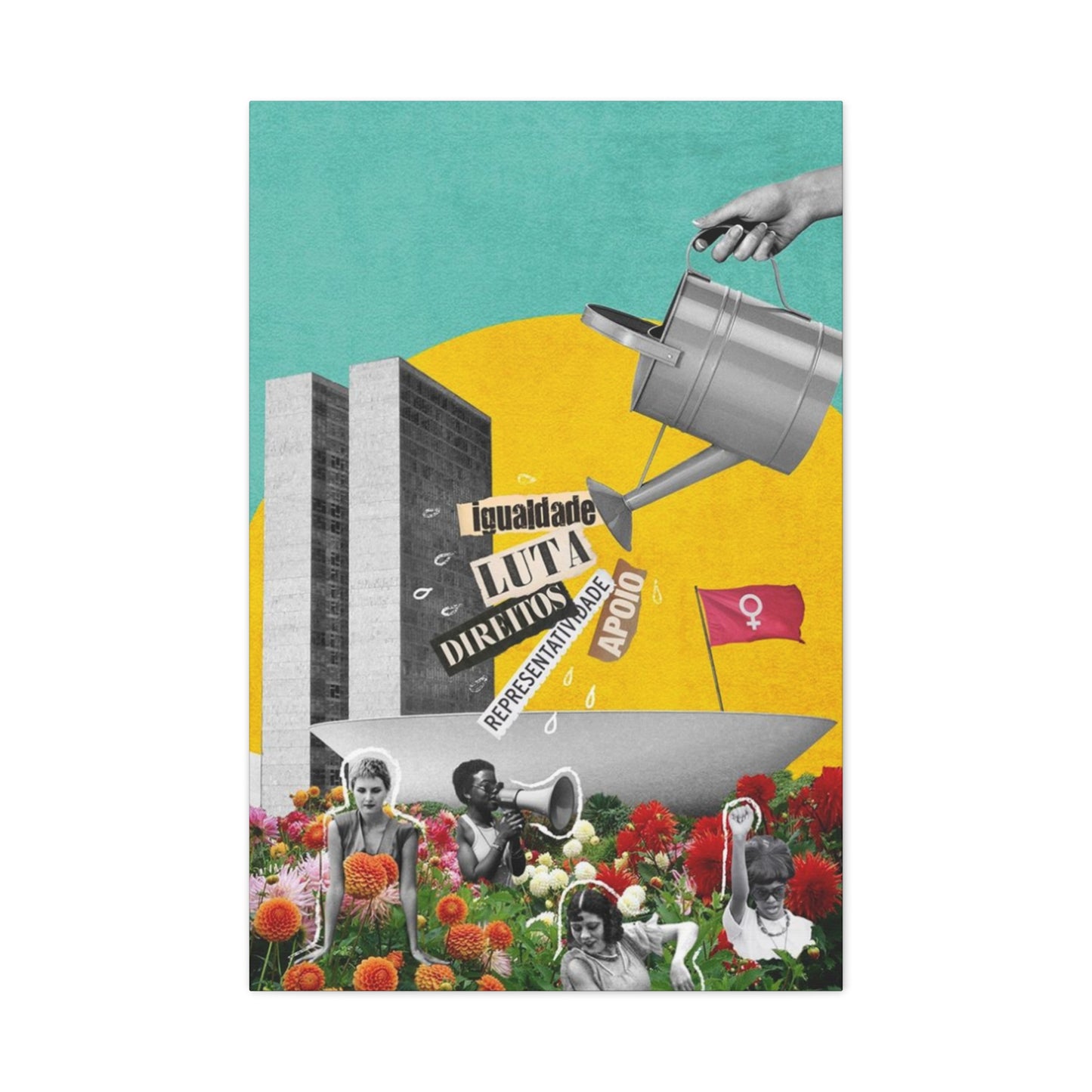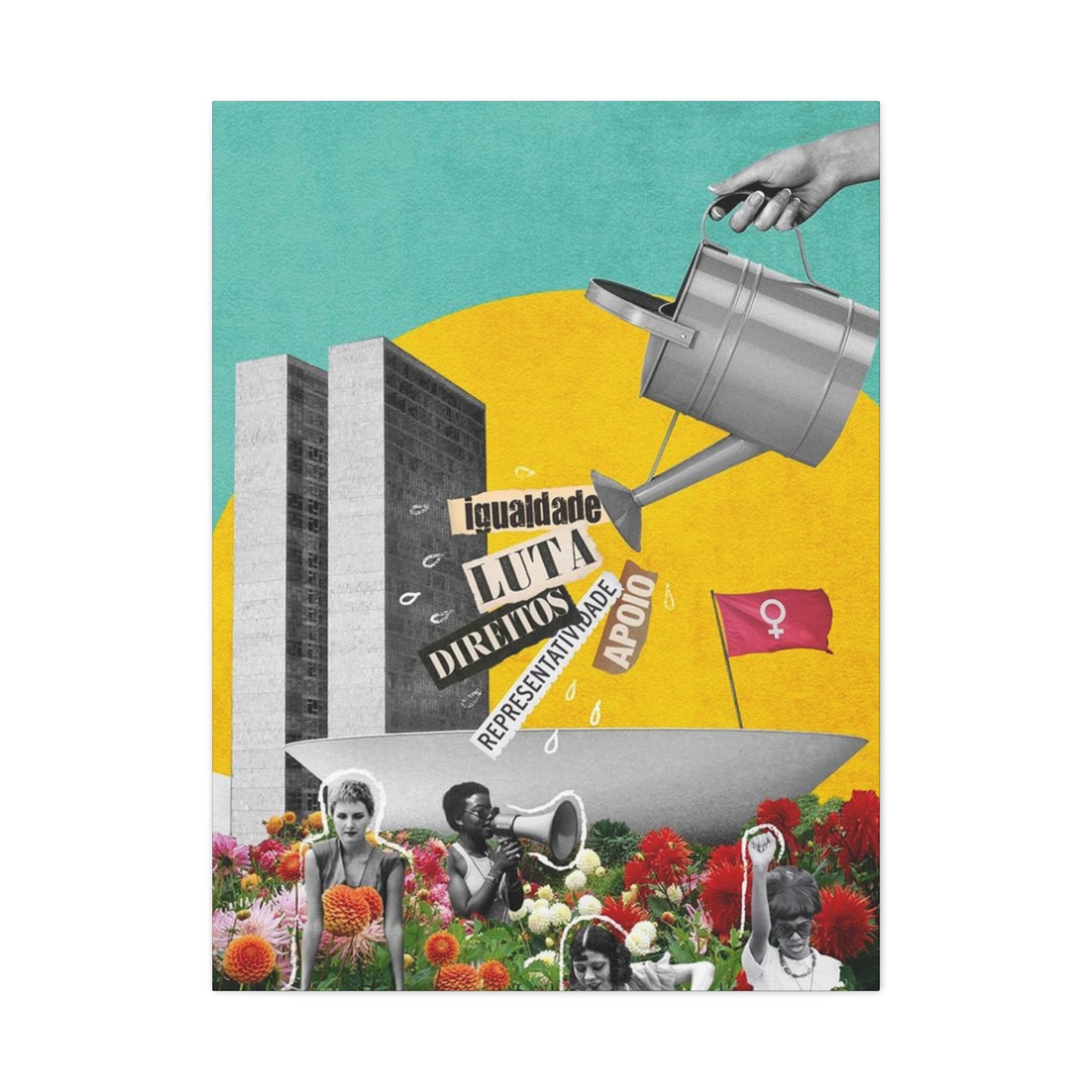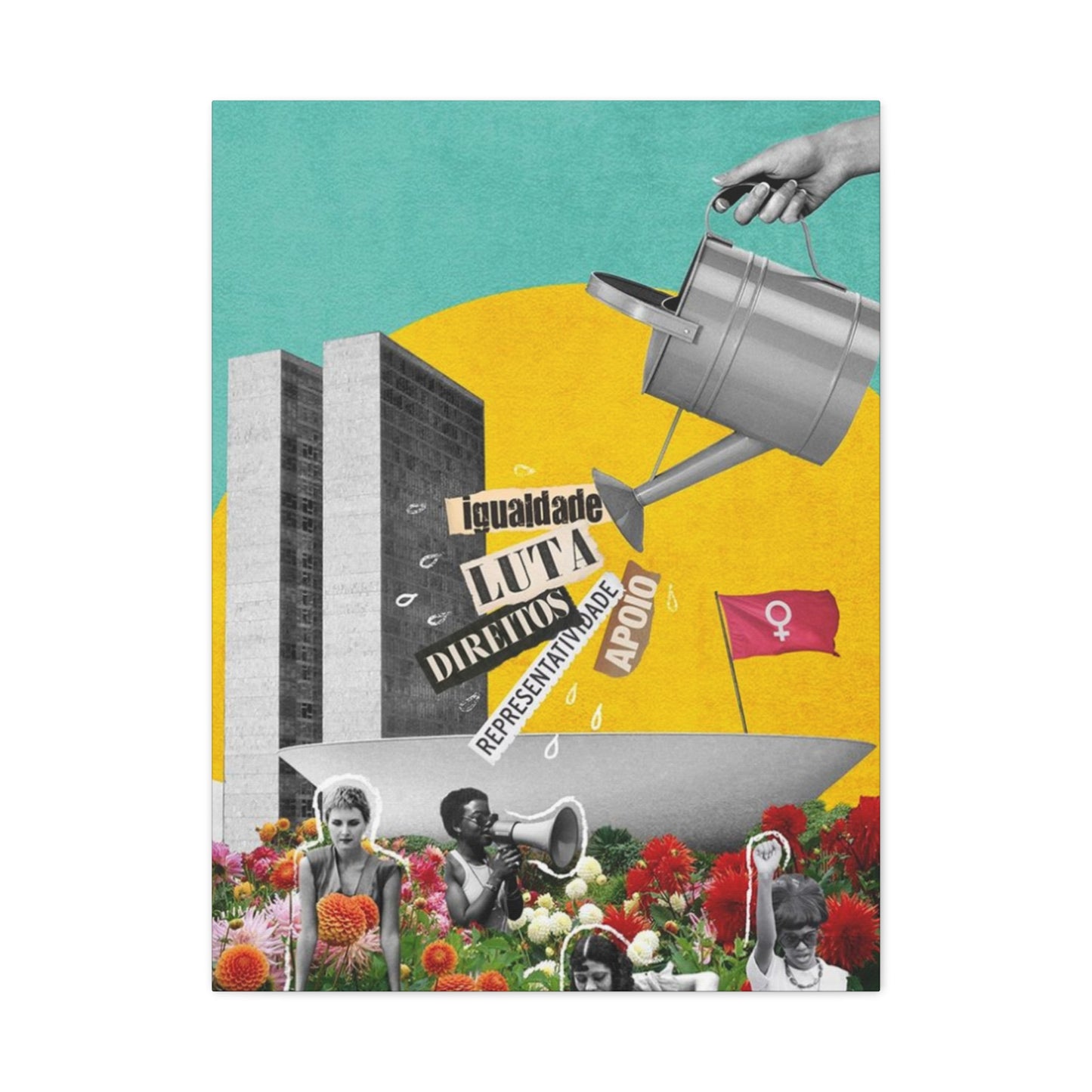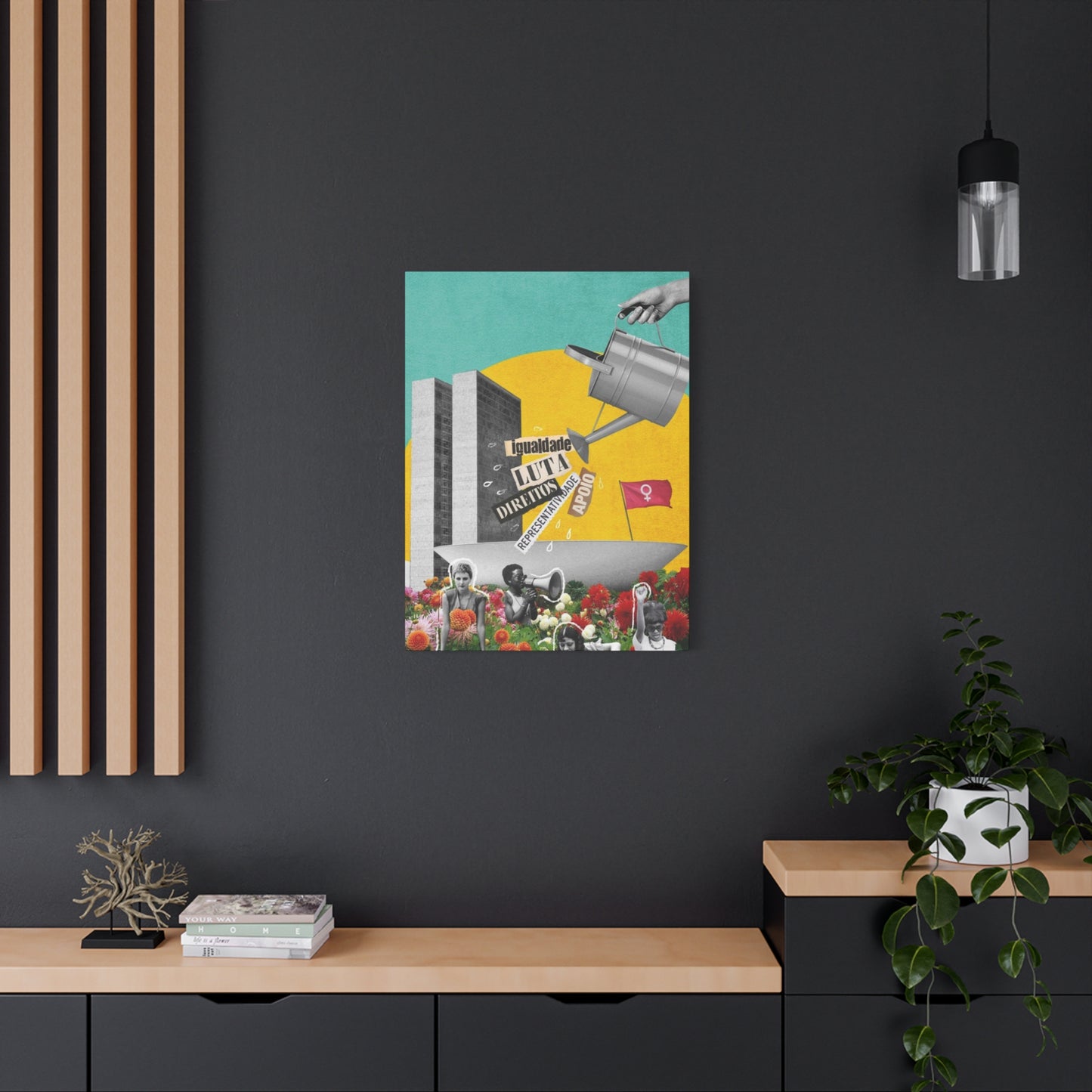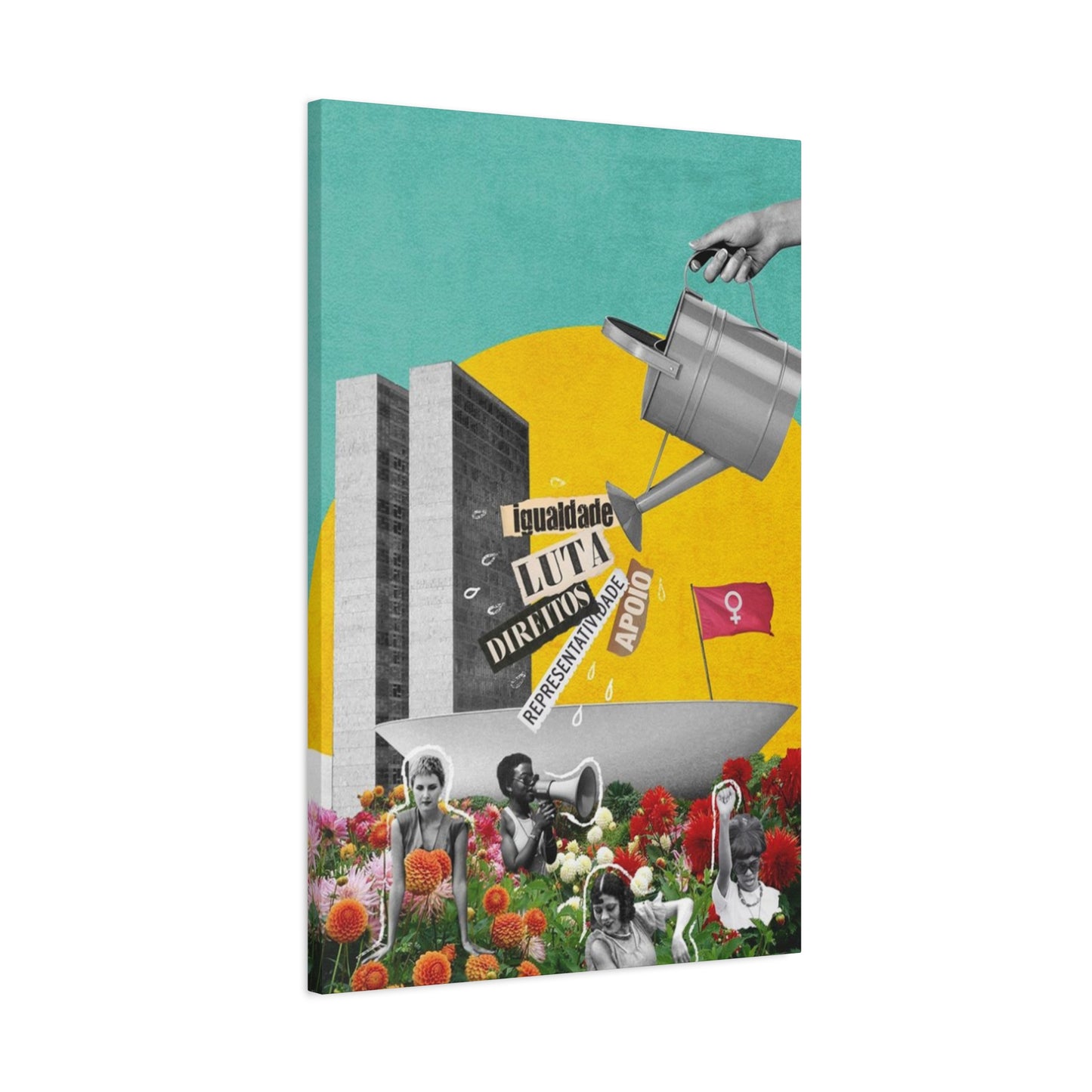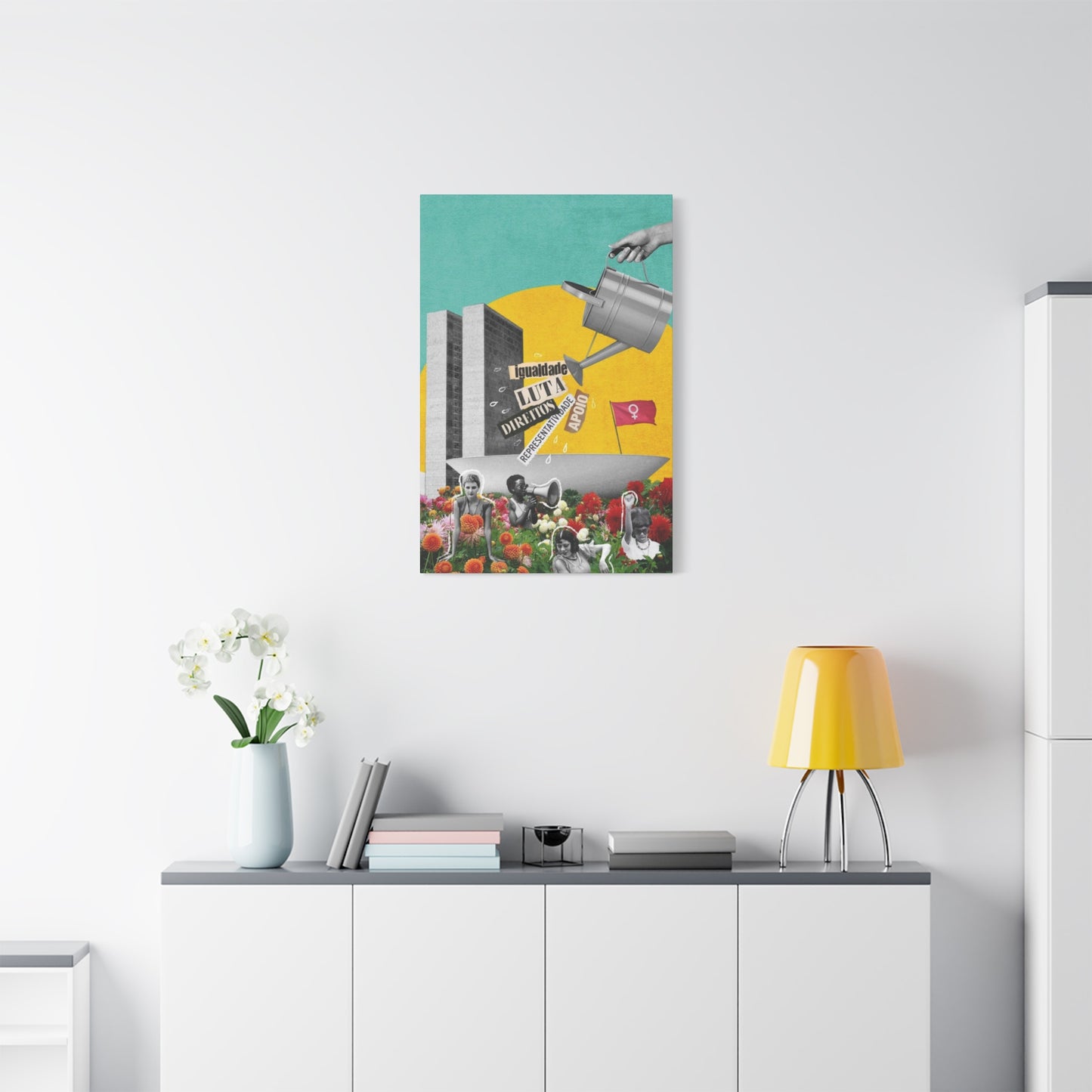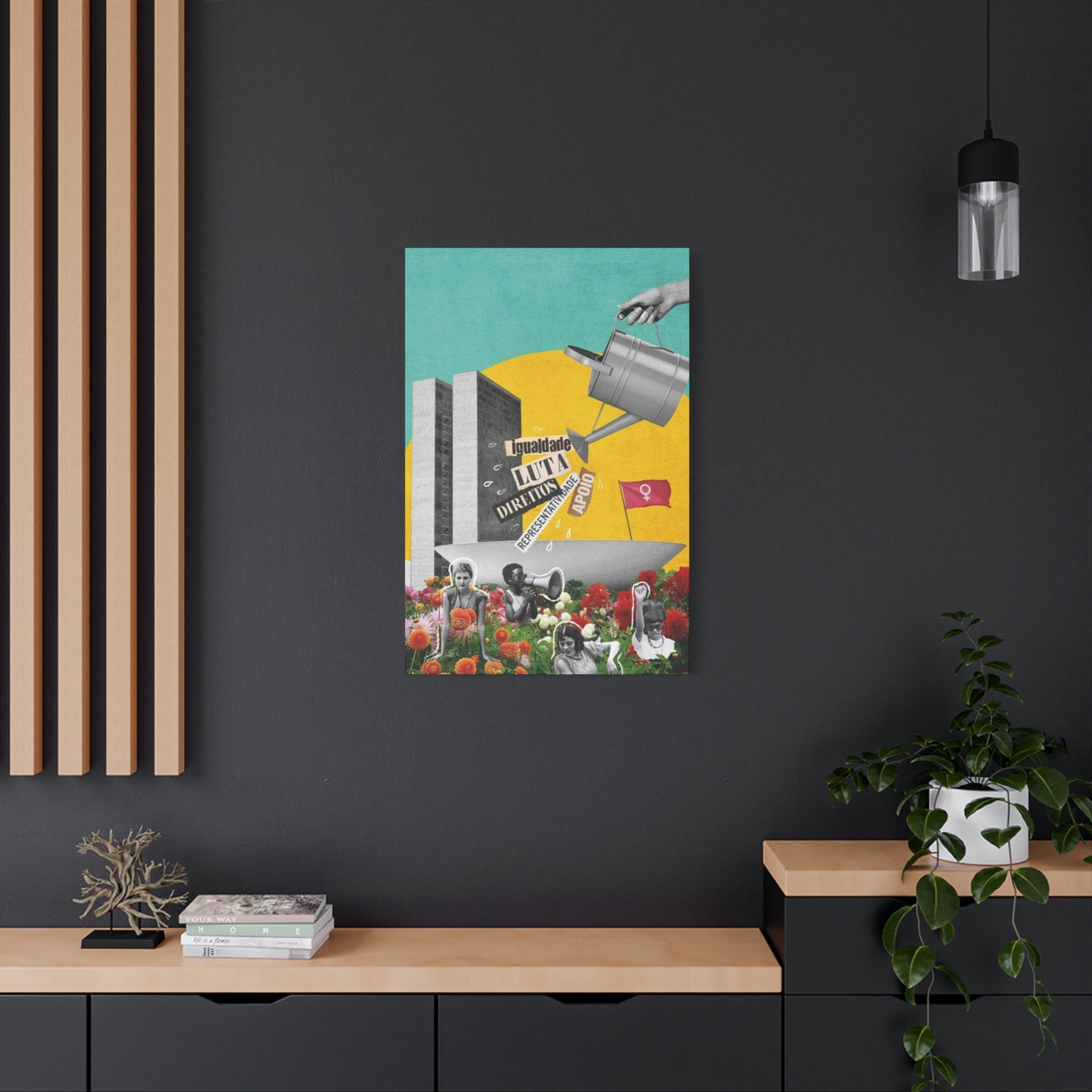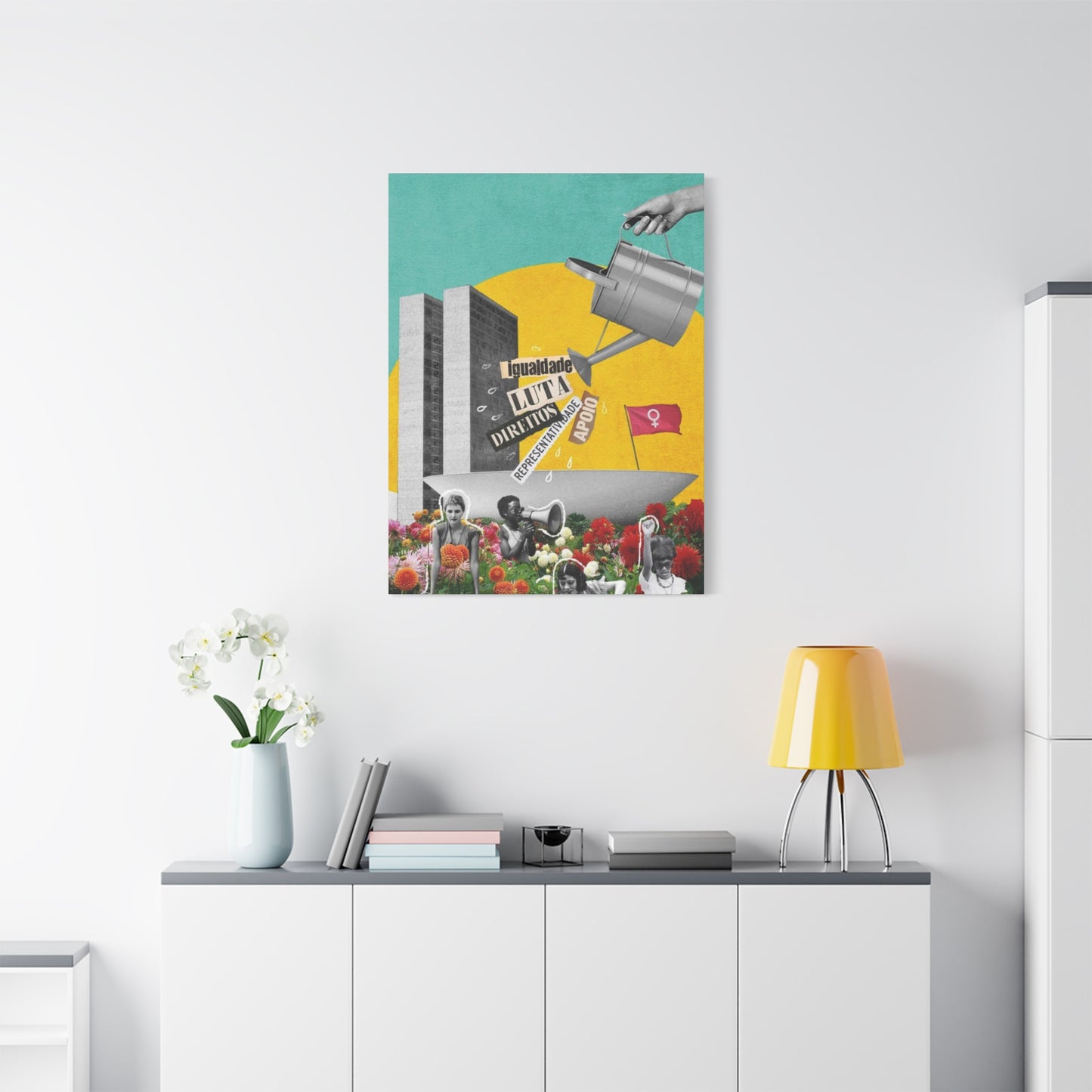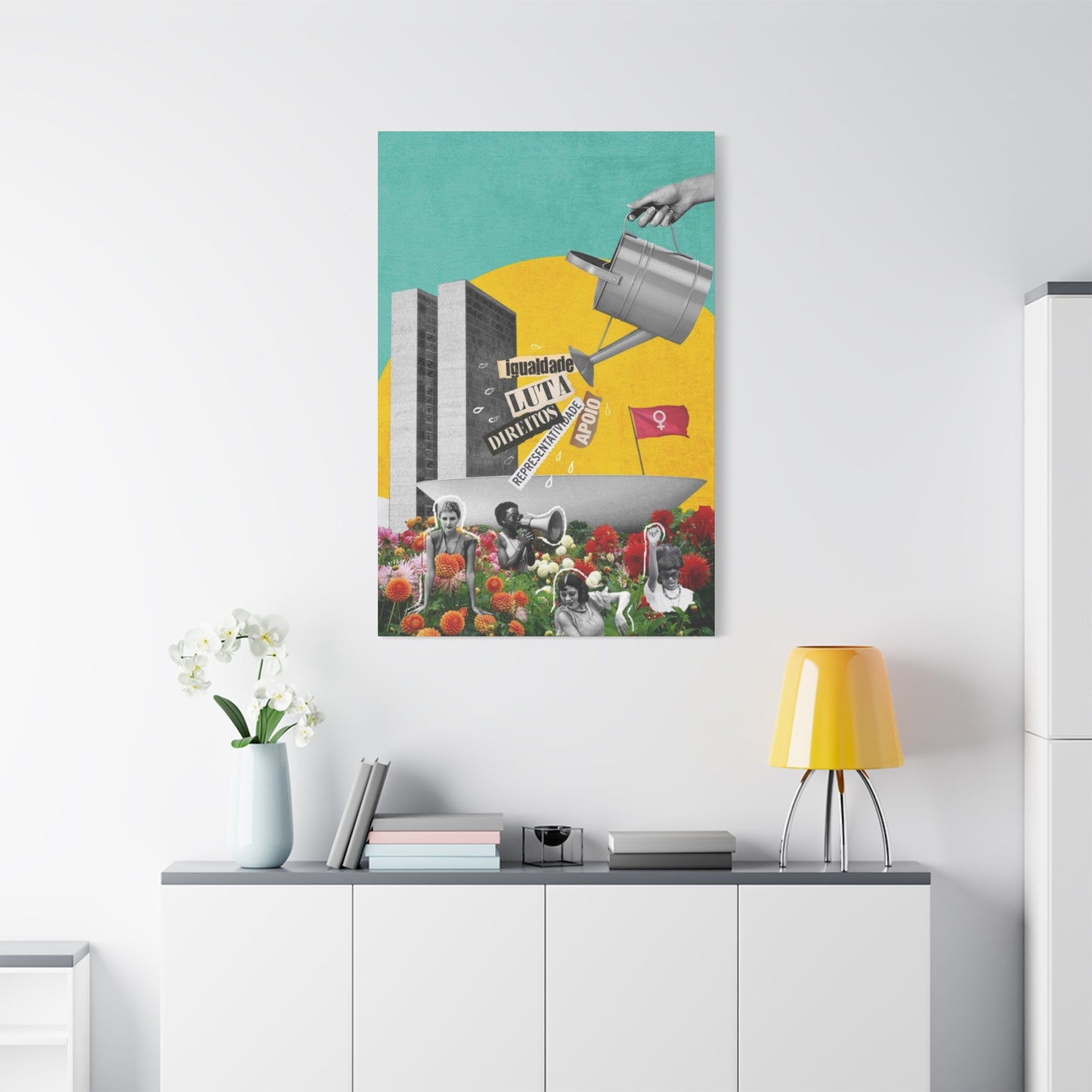Understanding the Value and Investment Potential of Mixed Media Wall Art Paintings
The contemporary art world has witnessed a remarkable evolution in artistic expression, particularly in the realm of mixed media wall art that celebrates architectural themes. This dynamic art form combines traditional painting techniques with innovative materials, photography, and found objects to create compelling visual narratives that capture the essence of urban environments and structural beauty. Artists worldwide are embracing this versatile medium to explore the relationship between built environments and artistic interpretation, resulting in captivating pieces that resonate with modern audiences seeking sophisticated visual experiences for their living and working environments.
Mixed media wall art represents a revolutionary approach to artistic creation, where boundaries between different mediums dissolve to create unified compositions that speak to our contemporary experience of architectural environments. This art form has gained tremendous popularity among collectors, designers, and art enthusiasts who appreciate the depth, texture, and visual complexity that emerges when multiple artistic techniques converge on a single canvas or surface. The incorporation of architectural elements, whether realistic or abstract, adds another layer of sophistication that connects viewers to their urban surroundings while providing endless possibilities for creative expression.
The rise of mixed media techniques in architectural art reflects our increasingly complex relationship with built environments. As cities continue to evolve and architectural styles blend traditional and contemporary elements, artists are responding with equally complex artistic approaches that mirror this urban complexity. Through the combination of painting, collage, photography, digital elements, and three-dimensional objects, artists create works that capture not just the visual appearance of buildings but also their emotional and cultural significance within our daily lives.
Metropolitan Aesthetic: Contemporary Mixed Media Compositions Showcasing Urban Landscapes
The metropolitan aesthetic in mixed media art represents a fascinating exploration of how artists interpret and respond to the urban environment around them. This artistic approach captures the dynamic energy, architectural diversity, and cultural richness found in modern cities through innovative combinations of materials and techniques. Artists working in this genre often draw inspiration from the juxtaposition of historical and contemporary architectural elements, creating compositions that reflect the layered nature of urban development and the constant evolution of cityscapes.
Contemporary artists working with urban landscape themes frequently employ a combination of acrylic paints, photography transfers, newspaper clippings, metal fragments, and digital prints to create multi-dimensional works that mirror the complexity of city life. These compositions often feature recognizable architectural landmarks alongside abstract interpretations of urban energy, creating a visual dialogue between the concrete reality of buildings and the emotional experience of city living. The use of mixed media allows artists to incorporate actual materials from urban environments, such as fragments of concrete, metal scraps, or weathered paper, adding authenticity and tactile interest to their works.
The color palettes employed in metropolitan mixed media art often reflect the diverse materials and lighting conditions found in urban environments. Artists might combine the cool grays and blues of concrete and steel with warm amber tones from street lighting, creating dynamic contrasts that capture the 24-hour energy of city life. The incorporation of neon colors through acrylic paints or digital elements can represent the vibrant signage and artificial lighting that characterizes modern urban landscapes, while earth tones might reference older architectural elements or natural materials incorporated into urban design.
Layering techniques play a crucial role in metropolitan mixed media compositions, with artists building up surfaces through multiple applications of paint, collage elements, and three-dimensional objects. This layering process mirrors the way cities develop over time, with new construction built upon or alongside older structures, creating a visual archaeology that tells the story of urban evolution. The transparency and opacity achieved through different materials can create depth and movement within compositions, suggesting the constant flow of people, vehicles, and energy that characterizes city life.
The incorporation of photographic elements in metropolitan mixed media art allows artists to ground their abstract interpretations in recognizable urban imagery. High-contrast black and white photographs of architectural details might be combined with vibrant painted elements, creating a tension between documentation and artistic interpretation. Digital manipulation of photographic elements can further blur the line between reality and artistic vision, allowing artists to emphasize certain architectural features while minimizing others to create compositions that capture the emotional essence of urban environments.
Texture plays a vital role in metropolitan mixed media compositions, with artists using various materials and techniques to create surfaces that invite tactile exploration. Heavy gel mediums mixed with sand or concrete dust can simulate the rough textures of urban surfaces, while smooth, glossy applications might represent the sleek surfaces of modern glass and steel construction. The contrast between different textures within a single composition can create visual interest and help guide viewers' attention through the artwork, creating a journey that mirrors the experience of moving through urban environments.
Exhibition and Display Concepts for Contemporary Architectural Mixed Media Compositions
The presentation of mixed media architectural compositions requires careful consideration of both aesthetic and practical factors to maximize their visual impact and ensure their preservation. The three-dimensional nature of many mixed media works means that traditional framing approaches may not be suitable, requiring custom mounting solutions that accommodate protruding elements while protecting the artwork from environmental factors. Gallery-style floating frames work particularly well for mixed media pieces that incorporate raised elements, as they provide a clean, contemporary appearance while allowing viewers to appreciate the dimensional qualities of the work.
Lighting considerations become especially important when displaying mixed media architectural art, as the varied materials and textures can create interesting shadow effects and highlight specific elements within the composition. Adjustable track lighting systems allow for precise control over how light falls across the surface of the artwork, emphasizing textures and creating dramatic effects that enhance the urban aesthetic. The angle and intensity of lighting can dramatically change how viewers perceive the piece, making it possible to create different moods and emphasize different aspects of the composition throughout the day.
The scale of mixed media architectural compositions often demands generous wall areas that allow viewers to fully appreciate the complexity and detail of the work. Large-scale pieces benefit from being displayed as focal points in rooms with sufficient viewing distance, while smaller works might be grouped in collections that tell a cohesive story about urban environments or architectural themes. The surrounding décor should complement rather than compete with the artwork, with neutral backgrounds and minimal furnishings allowing the complexity of the mixed media composition to take center stage.
Conservation considerations are particularly important for mixed media works that incorporate non-traditional materials or found objects from urban environments. Protective measures such as museum-quality UV-filtering glass or acrylic can help prevent fading and deterioration of photographic elements and certain pigments, while climate control systems can minimize the expansion and contraction of different materials that might occur with temperature and humidity fluctuations. Regular inspection and maintenance protocols should be established to monitor the condition of various materials and address any signs of deterioration before they become serious problems.
The integration of mixed media architectural art into commercial and residential environments requires consideration of the overall design aesthetic and the specific function of the room. In corporate environments, these works can serve as conversation starters and expressions of company culture, particularly for businesses in architecture, construction, or urban planning fields. In residential settings, mixed media architectural compositions can create dramatic focal points that reflect the homeowner's appreciation for contemporary art and urban aesthetics, while their textural complexity adds visual interest that changes throughout the day as lighting conditions vary.
Interactive elements can be incorporated into the display of mixed media architectural compositions to enhance viewer engagement and education. Digital displays or QR codes can provide information about the materials used, the inspiration behind the work, or the architectural elements referenced in the composition. This additional layer of information can deepen viewers' appreciation for the complexity of the artistic process and help them understand the connections between the artwork and real urban environments.
Advanced Compositional Strategies for Architectural Mixed Media Creations
The development of sophisticated compositional strategies in architectural mixed media art requires a deep understanding of both artistic principles and architectural design concepts. Successful compositions in this genre often employ architectural elements such as rhythm, proportion, and structural hierarchy to organize visual elements within the artwork. Artists might use the repetition of building elements like windows, columns, or rooflines to create visual rhythm, while varying the scale and positioning of these elements to maintain viewer interest and create dynamic movement through the composition.
The concept of positive and negative spaces becomes particularly important in architectural mixed media compositions, where the interplay between solid architectural forms and open areas can create powerful visual effects. Artists might use painted elements to represent built structures while leaving areas of raw canvas or substrate to suggest open sky, courtyards, or urban voids. This strategic use of negative area can create breathing room within complex compositions while also referencing the important role that open areas play in urban planning and architectural design.
Color theory applications in architectural mixed media art often draw from both traditional artistic principles and the specific color relationships found in urban environments. Complementary color schemes might be used to create vibrant contrasts that capture the energy of city life, while analogous color harmonies can suggest the unified aesthetic of particular architectural periods or geographic regions. The incorporation of metallic elements through actual metal objects or metallic paints can reference the industrial materials commonly used in contemporary architecture while adding reflective surfaces that interact with gallery lighting.
Perspective and spatial relationships in mixed media architectural compositions require careful planning to create convincing illusions of depth while accommodating three-dimensional elements. Linear perspective might be used in painted elements to suggest receding architectural forms, while physical objects attached to the surface can break the picture plane and bring elements forward into the viewer's area. This interplay between illusionistic depth and actual dimensional projection can create compelling spatial ambiguities that reflect the complex spatial relationships found in urban environments.
The integration of time-based concepts into architectural mixed media compositions allows artists to reference the temporal aspects of urban environments, such as the daily cycles of activity, seasonal changes in lighting, or the long-term evolution of neighborhoods. Photographic elements might capture architectural subjects at different times of day or in different seasons, while painted elements could suggest the movement of people, vehicles, or weather patterns through urban environments. The layering of materials can also suggest the passage of time, with lower layers representing older architectural elements and upper layers showing more recent additions or modifications.
Scale relationships within architectural mixed media compositions require careful consideration to create coherent visual narratives while accommodating the practical constraints of the display environment. Large architectural elements might be suggested through broad painted areas or large photographic prints, while smaller details could be rendered through collage elements or small three-dimensional objects. The relationship between different scales within a single composition can create visual tension and interest while helping viewers understand the hierarchical relationships between different architectural elements.
Material Innovation and Experimental Techniques in Contemporary Architectural Art
The continuous evolution of materials and techniques available to mixed media artists has opened new possibilities for expressing architectural themes and urban experiences. Contemporary artists are increasingly experimenting with industrial materials traditionally used in construction and architecture, incorporating elements such as concrete, steel wool, architectural mesh, and building insulation into their artistic compositions. These materials bring authentic textures and associations that strengthen the connection between the artwork and actual architectural environments while challenging traditional notions of appropriate artistic media.
Digital integration has become increasingly sophisticated in contemporary mixed media architectural art, with artists using tablets and digital projectors to create preliminary compositions that can be modified and refined before committing to physical materials. High-resolution printing technologies allow for the integration of digital elements that seamlessly blend with traditional media, while laser cutting and 3D printing technologies enable the creation of precise architectural details that would be difficult or impossible to achieve through traditional handcraft methods. These technological tools expand the artist's palette while maintaining the hands-on character that defines mixed media approaches.
Environmental sustainability considerations are increasingly influencing material choices in contemporary mixed media art, with many artists seeking to incorporate recycled or upcycled materials that reference the growing importance of sustainable architecture and urban design. Reclaimed wood, recycled metal, and repurposed building materials can add authentic character to compositions while making statements about environmental responsibility and the circular economy. These materials often come with their own history and patina, adding layers of meaning to the finished artwork that extend beyond their purely visual contributions.
Experimental surface preparation techniques allow artists to create unique foundations for their mixed media architectural compositions. Traditional canvas might be combined with metal panels, wood substrates, or custom-built frames that accommodate unusual shapes or three-dimensional elements. The preparation of these surfaces might involve texturing with sand, grit, or modeling paste to create foundations that reference specific architectural materials or weathering patterns. These preparatory processes become part of the creative process, influencing how subsequent layers of media will interact and appear in the finished work.
The chemistry of material interactions becomes particularly important in mixed media works that combine materials with different expansion rates, pH levels, or chemical compositions. Artists must understand how different adhesives, paints, and substrates will interact over time to ensure the longevity of their works. Professional-grade archival materials and proper isolation layers can prevent chemical reactions that might cause discoloration, separation, or deterioration, while allowing artists to achieve their desired visual effects without compromising the integrity of the finished piece.
Color matching and coordination across different media types requires sophisticated understanding of how pigments behave in different carriers and how various materials reflect and absorb light. A color that appears vibrant in acrylic paint might look quite different when printed digitally or applied to metal surfaces, requiring artists to develop working methods that account for these variations. Custom color mixing and testing become essential parts of the creative process, ensuring that all elements within a composition work together harmoniously despite their diverse material origins.
Architectural Detail Enhancement Through Multi-Layered Mixed Media Approaches
The capture and interpretation of architectural details through mixed media techniques requires a sophisticated understanding of how different materials and methods can enhance specific aspects of built environments. Artists working in this genre often begin with careful observation and documentation of architectural elements, studying how light interacts with different surfaces, how materials weather and age, and how details contribute to the overall character of buildings and urban environments. This observational foundation informs material choices and technical approaches that can effectively translate these observations into compelling artistic compositions.
Photographic documentation serves as an important foundation for many mixed media architectural detail compositions, providing accurate reference material that can be manipulated, enhanced, or abstracted through various artistic techniques. High-resolution digital photography allows artists to capture fine textural details that might be difficult to render through traditional drawing or painting methods, while multiple exposure techniques can capture the changing appearance of architectural elements under different lighting conditions. These photographic elements might be printed on various substrates or transferred to canvas using specialized techniques that allow for subsequent manipulation with paints and other media.
The enhancement of architectural details through layering techniques allows artists to emphasize specific aspects of building design while creating visual hierarchy within their compositions. Transparent glazes applied over photographic elements can modify color relationships and create atmospheric effects, while opaque applications can selectively conceal or reveal portions of underlying imagery. The strategic use of masking techniques allows for precise control over which areas receive different treatments, enabling artists to guide viewer attention through the composition while maintaining overall visual coherence.
Three-dimensional elements play a crucial role in architectural detail enhancement, allowing artists to bring specific features forward from the picture plane and create tactile experiences that engage viewers' sense of touch as well as vision. Molded or carved elements might replicate architectural ornaments, while found objects from actual buildings can add authenticity and direct connection to real architectural environments. The integration of these dimensional elements requires careful planning to ensure proper attachment and long-term stability while maintaining the desired visual relationships with painted and printed elements.
Surface modeling techniques using various pastes, gels, and additives can create convincing simulations of architectural materials such as stone, brick, concrete, or metal. Heavy gel mediums mixed with sand or pumice can replicate the rough textures of weathered masonry, while smooth applications might suggest polished stone or glass surfaces. The strategic application of these textural elements can create visual and tactile interest while reinforcing the architectural themes of the composition. The interplay between smooth and rough areas can guide viewer attention and create visual rhythm that reflects the varied textures found in real architectural environments.
Color relationships in architectural detail enhancement require careful consideration of how different materials and lighting conditions affect the appearance of building elements. The warm tones of brick or wood might be contrasted with the cool grays of concrete or steel, while the interaction of natural and artificial lighting can create complex color relationships that change throughout the day. Artists might choose to emphasize these natural color relationships or deliberately modify them to create specific moods or emphasize particular aspects of the architectural subject matter.
Contemporary Applications of Mixed Media Techniques in Architectural Expression
The contemporary art world has embraced mixed media approaches to architectural expression as a means of addressing current issues in urban development, environmental sustainability, and cultural identity. Artists working in this genre often use their compositions to comment on gentrification, urban decay, sustainable development, or the preservation of architectural heritage. These works serve not only as aesthetic objects but also as vehicles for social and political commentary that engage viewers in discussions about the role of architecture in shaping human experience and community identity.
Digital technology integration has revolutionized contemporary mixed media architectural art, allowing artists to incorporate elements such as QR codes that link to additional content, LED lighting systems that change over time, or sensor-triggered elements that respond to viewer presence. These technological additions can create interactive experiences that reflect the increasingly connected nature of contemporary urban environments while maintaining the hands-on character that defines traditional mixed media approaches. The balance between technological enhancement and artistic integrity requires careful consideration to ensure that technical elements serve the overall artistic vision rather than overwhelming it.
Collaborative approaches to mixed media architectural art have become increasingly popular, with artists partnering with architects, urban planners, and community members to create works that reflect collective experiences and perspectives. These collaborative projects often incorporate materials, images, or objects contributed by community members, creating artworks that serve as collective portraits of particular neighborhoods or architectural environments. The collaborative process itself becomes part of the artistic methodology, with community input influencing both the visual development and conceptual framework of the finished pieces.
Site-specific mixed media installations allow artists to create direct dialogue between their work and particular architectural environments. These installations might be designed for specific buildings, urban plazas, or architectural sites, incorporating elements from the immediate environment while adding new layers of interpretation and meaning. The temporary or permanent nature of these installations affects their material choices and construction methods, with temporary works allowing for more experimental approaches while permanent installations require materials and techniques that can withstand long-term environmental exposure.
The documentation and preservation of architectural heritage through mixed media art has become an important contemporary application, with artists creating works that capture the essence of endangered or demolished buildings. These works serve as both artistic expressions and historical documents, preserving visual and tactile memories of architectural elements that might otherwise be lost. The incorporation of actual materials from demolished buildings adds powerful emotional and historical dimensions to these commemorative works while raising awareness about the importance of architectural preservation.
Educational applications of mixed media architectural art have expanded significantly, with artists creating works that help viewers understand architectural history, construction techniques, or urban planning concepts. These educational artworks might incorporate cutaway views, exploded diagrams, or comparative elements that reveal hidden structural systems or historical development patterns. The multi-sensory nature of mixed media approaches makes these educational artworks particularly effective for engaging diverse learning styles and age groups while maintaining high aesthetic standards.
Sophisticated Layering Methods for Enhanced Visual Depth in Building-Inspired Compositions
The development of sophisticated layering methods represents one of the most crucial aspects of creating compelling mixed media compositions inspired by architectural subjects. Master artists in this field understand that effective layering goes beyond simple accumulation of materials, instead requiring careful orchestration of transparent and opaque elements, varied textures, and strategic color relationships that build visual complexity while maintaining compositional clarity. The most successful architectural mixed media works often employ layering strategies that mirror the way buildings themselves are constructed, with foundational elements supporting increasingly refined details and surface treatments.
The foundational layer in sophisticated mixed media architectural compositions typically establishes the basic compositional structure and primary color relationships that will influence all subsequent additions. This foundation might consist of broad washes of acrylic paint that suggest the basic forms and spatial relationships of architectural elements, or it could incorporate large-scale photographic transfers that provide realistic reference points for more abstract interpretations. The key to effective foundational layering is creating a stable base that provides enough visual information to guide subsequent decisions while remaining flexible enough to accommodate modifications and refinements as the work develops.
Intermediate layering stages allow for the development of more specific architectural details and the introduction of varied materials that create textural interest and visual complexity. These layers might incorporate collage elements such as architectural drawings, building permits, or fragments of actual building materials that add authenticity and conceptual depth to the composition. The strategic placement of these intermediate elements requires careful consideration of how they will interact with both the foundational layer below and the finishing details that will be added later. Successful intermediate layering creates visual pathways that guide viewer attention through the composition while building the kind of complexity that rewards extended viewing.
The use of transparent and translucent materials in layering strategies allows artists to create atmospheric effects that suggest the interaction of light and shadow in architectural environments. Glazing mediums mixed with small amounts of pigment can create colored veils that modify underlying elements without completely obscuring them, while transparent films or tissues can add texture and visual interest while maintaining the visibility of lower layers. The strategic use of transparency can create depth relationships that suggest the layered nature of urban environments, where buildings at different distances appear with varying degrees of clarity and detail.
Masking techniques play a crucial role in sophisticated layering approaches, allowing artists to selectively protect certain areas while modifying others. Removable masks such as painter's tape or frisket film enable precise control over where new materials are applied, while organic masking materials such as leaves or paper cutouts can create more natural edge qualities that reference architectural elements like decorative screens or structural openings. The timing of mask removal becomes a critical factor, as different adhesion periods can create varying edge qualities that contribute to the overall visual character of the composition.
Surface build-up through dimensional layering adds sculptural qualities that engage viewers' tactile as well as visual senses. Modeling pastes, heavy gel mediums, and applied objects create actual depth variations that interact dramatically with lighting conditions while referencing the three-dimensional nature of architectural subjects. The strategic placement of these dimensional elements requires consideration of viewing angles and lighting conditions in the intended display environment to ensure that shadow patterns and surface textures contribute positively to the overall composition rather than creating distracting or confusing visual effects.
Color interaction between layers creates some of the most sophisticated visual effects in architectural mixed media compositions, with underlying colors influencing the appearance of overlying materials in complex ways that can be difficult to predict without extensive experience and testing. Warm underlying colors can make overlying cool colors appear more vibrant, while complementary color relationships between layers can create visual vibration effects that capture the energy and dynamism of urban environments. Understanding these color interactions allows artists to plan layering sequences that build toward specific visual goals while maintaining flexibility for creative discoveries that emerge during the working process.
Integration of Found Objects and Urban Materials in Contemporary Building-Themed Art
The incorporation of found objects and materials sourced directly from urban environments represents a powerful approach to creating authentic connections between mixed media artworks and the architectural subjects they reference. This practice, which has roots in the collage traditions established by early 20th-century artists, has evolved into sophisticated methodologies that transform discarded urban materials into integral components of compelling artistic compositions. Contemporary artists working in this genre often develop extensive collections of urban materials, carefully cataloging and organizing fragments of concrete, metal, glass, brick, and other building materials that can be integrated into their artistic practice.
The selection process for found urban materials requires both aesthetic and practical considerations, as artists must evaluate not only the visual qualities of potential materials but also their structural stability, chemical composition, and long-term preservation characteristics. Materials collected from construction sites, demolition projects, or urban decay situations often require cleaning, stabilization, or protective treatment before they can be safely incorporated into artworks intended for long-term display. This preparation process becomes part of the artistic practice, with decisions about how much to alter or preserve the original character of found materials affecting the conceptual impact of the finished work.
Documentation and provenance tracking of found urban materials can add significant conceptual depth to mixed media architectural compositions. Artists might maintain detailed records of where and when materials were collected, along with photographic documentation of their original context within the urban environment. This information can become part of the artwork's narrative, connecting viewers to specific places, times, and circumstances that give the materials personal and historical significance. The stories behind found materials can transform simple visual elements into powerful symbols of urban change, economic conditions, or social circumstances.
The physical integration of found objects into mixed media compositions requires sophisticated mounting and attachment techniques that ensure both visual effectiveness and structural stability. Heavy objects might require internal armatures or specialized mounting hardware that distributes weight evenly across the supporting substrate, while delicate materials might need protective housing or strategic positioning to prevent damage during handling and display. The visibility of attachment methods becomes an aesthetic decision, with some artists choosing to conceal mounting systems while others make them part of the visual composition as references to architectural construction techniques.
Scale relationships between found objects and other compositional elements require careful orchestration to create coherent visual narratives. Large architectural fragments might serve as dominant focal points that organize surrounding painted or collaged elements, while smaller objects could function as detail elements that add textural interest and authentic material references. The contrast between the authentic weathering and aging of found materials and the fresh appearance of newly applied paints or prints can create temporal tensions that reference the ongoing evolution of urban environments.
Chemical compatibility between found materials and traditional art materials becomes a crucial consideration for long-term preservation. Urban materials may contain salts, acids, or other chemical compounds that could interact negatively with adhesives, paints, or substrates over time. Proper testing and isolation techniques can prevent these negative interactions while preserving the authentic character of found materials. Professional conservation consultation might be necessary for works incorporating materials with unknown or potentially problematic chemical compositions.
The ethical and legal considerations surrounding the collection and use of found urban materials require careful attention to property rights, safety regulations, and environmental concerns. Materials should be collected only from publicly accessible areas or with proper permissions from property owners, while safety precautions must be taken when dealing with materials that might contain hazardous substances such as lead paint or asbestos. Environmental responsibility suggests avoiding the collection of materials from sensitive ecological areas or contributing to illegal dumping practices.
Balancing Abstract and Realistic Elements in Contemporary Architectural Mixed Media Works
The successful integration of abstract and realistic elements within architectural mixed media compositions requires sophisticated understanding of how these contrasting approaches can work together to create unified artistic statements. This balance allows artists to capture both the physical reality of architectural subjects and their emotional or conceptual impact, creating works that operate on multiple levels of meaning and visual engagement. The most compelling works in this genre often use realistic elements to ground the composition in recognizable architectural references while employing abstract techniques to express the energy, atmosphere, or emotional qualities associated with urban environments.
Realistic elements in architectural mixed media works often take the form of detailed photographic reproductions, precise technical drawings, or carefully rendered painted passages that accurately depict specific architectural features. These realistic components serve as anchor points that help viewers orient themselves within the composition while providing clear references to actual building types, architectural styles, or urban environments. The level of detail and finish applied to realistic elements can vary considerably, from photographic precision to more impressionistic approaches that capture essential characteristics while leaving room for viewer interpretation and imagination.
Abstract elements provide opportunities to express qualities that cannot be directly represented through realistic depiction, such as the energy of urban life, the emotional impact of architectural environments, or the temporal aspects of building use and urban change. These abstract components might take the form of gestural brushstrokes that suggest movement and activity, color field passages that create atmospheric effects, or non-representational collage elements that add textural interest and visual complexity. The scale, placement, and intensity of abstract elements must be carefully considered to ensure they enhance rather than compete with realistic components.
The transition zones between realistic and abstract elements often become the most visually interesting and conceptually rich areas of mixed media architectural compositions. These transitional areas might feature partially abstracted architectural details that fade from realistic representation into pure color and texture, or they could incorporate collage elements that bridge the gap between photographic documentation and artistic interpretation. The management of these transition zones requires subtle understanding of visual hierarchy and compositional flow to ensure that viewers can move smoothly between different levels of representation without experiencing jarring disconnections.
Color relationships between abstract and realistic elements require careful orchestration to maintain visual unity while allowing each type of element to serve its specific function within the composition. Realistic photographic elements might be selectively desaturated or tinted to better integrate with more expressive abstract passages, while abstract color choices might be informed by the actual colors found in architectural subjects. The strategic repetition of colors between realistic and abstract areas helps create visual connections that unify the composition while allowing for the expressive freedom that defines the mixed media approach.
Scale manipulation can serve as a powerful tool for integrating abstract and realistic elements, with changes in scale helping to distinguish between different types of representation while creating visual interest and compositional dynamics. Large-scale abstract passages might provide dramatic backgrounds for smaller realistic details, while oversized realistic elements could be balanced by more delicate abstract textures and patterns. The interplay between different scales can create spatial ambiguities that reflect the complex spatial relationships found in urban environments while maintaining the visual coherence necessary for successful artistic composition.
The conceptual relationship between abstract and realistic elements should reinforce the overall artistic intention of the work, with each type of element contributing specific qualities that support the central theme or message. Realistic elements might represent the physical facts of architectural environments while abstract components express the human experience of those environments, or vice versa. The balance between objective documentation and subjective interpretation becomes a fundamental aspect of the artistic statement, with the relative emphasis on realistic versus abstract elements communicating important information about the artist's perspective and intended meaning.
Maintenance and Conservation Strategies for Mixed Media Architectural Artworks
The preservation of mixed media architectural artworks presents unique challenges that require specialized knowledge of how different materials age, interact, and respond to environmental conditions over time. Unlike traditional paintings or sculptures that employ relatively homogeneous materials, mixed media works incorporate diverse substances with varying expansion rates, chemical compositions, and stability characteristics that can create complex preservation issues. Professional conservation approaches to these works must consider not only the individual properties of each material but also how these materials interact with each other and with the display environment over extended periods.
Environmental control systems play a crucial role in the preservation of mixed media architectural artworks, with temperature and humidity fluctuations posing particular risks to works that incorporate multiple materials with different expansion and contraction rates. The installation of professional-grade HVAC systems with precise temperature and humidity controls can minimize these fluctuations while filtering airborne pollutants that might accelerate deterioration processes. The target environmental conditions for mixed media works often represent compromises between the ideal conditions for different materials, requiring careful research into the specific components of each artwork to establish appropriate parameters.
Lighting design for mixed media architectural artworks must balance the need for adequate illumination to appreciate the works' visual qualities with the preservation requirements that limit exposure to harmful ultraviolet and infrared radiation. LED lighting systems with programmable controls allow for precise management of light levels and spectral composition while generating minimal heat that could affect temperature-sensitive materials. The use of museum-quality UV-filtering glazing or coatings can provide additional protection for light-sensitive components while maintaining visual clarity and color accuracy.
Regular inspection and documentation protocols should be established to monitor the condition of mixed media architectural artworks and identify potential problems before they become serious conservation issues. These inspections might include photographic documentation of the artwork's overall appearance and specific details, measurements of any dimensional changes in three-dimensional elements, and testing of the security of attached objects or collage elements. The frequency of inspections should be determined based on the age of the artwork, the stability of its materials, and the environmental conditions in which it is displayed.
Cleaning procedures for mixed media architectural artworks require extreme care and specialized knowledge, as different materials within a single work may require different cleaning methods and materials. Mechanical cleaning methods such as soft brushes or cotton swabs might be appropriate for some areas while being potentially damaging to others, while solvent-based cleaning systems that are safe for painted areas might dissolve adhesives or damage photographic elements. Professional conservation testing on small, inconspicuous areas should precede any major cleaning efforts to ensure that proposed methods will not cause damage to any components of the artwork.
Protective housing and storage solutions for mixed media architectural artworks must accommodate their three-dimensional characteristics while providing adequate protection from dust, light, and physical damage. Custom-designed storage boxes or crates might be necessary for works with significant dimensional elements, while protective covers or glazing systems can provide protection during display periods. The materials used in storage and protective systems must be chemically stable and free from acidic compounds that could off-gas and cause damage to the artwork over time.
Emergency response procedures should be developed and regularly updated to address potential threats such as fire, flood, or vandalism that could affect mixed media architectural artworks. These procedures should include detailed documentation of each artwork's components and construction methods to facilitate rapid assessment and treatment in emergency situations. The development of relationships with qualified conservators and emergency response contractors before problems occur can significantly improve the outcomes of emergency interventions while minimizing damage to valuable artworks.
Digital Integration and Contemporary Technology Applications in Mixed Media Building Art
The integration of digital technologies into mixed media architectural art has opened unprecedented possibilities for artistic expression while challenging traditional boundaries between physical and virtual artistic media. Contemporary artists are increasingly incorporating digital printing, projection mapping, interactive sensors, and augmented reality elements into their architectural compositions, creating hybrid works that respond to contemporary urban experiences while maintaining the tactile qualities that define mixed media approaches. This technological integration requires new skills and working methods while raising important questions about authenticity, permanence, and the fundamental nature of artistic media in the digital age.
High-resolution digital printing technologies have revolutionized the way photographic elements can be incorporated into mixed media architectural compositions. Large-format printers capable of producing museum-quality outputs on various substrates allow artists to create seamless integrations between printed imagery and traditional painted or collaged elements. The ability to print on textured papers, canvas, metal, or synthetic substrates provides opportunities to match the surface qualities of printed elements with other materials in the composition while ensuring color accuracy and longevity that rival traditional photographic processes.
3D printing and laser cutting technologies enable the creation of precise architectural details and custom mounting hardware that would be difficult or impossible to achieve through traditional fabrication methods. These technologies allow artists to reproduce architectural ornaments, create custom frames or mounting systems, or fabricate entirely new elements that reference specific building details while serving the compositional needs of the artwork. The relatively low cost and increasing accessibility of these technologies have democratized access to precision fabrication capabilities while opening new creative possibilities for artists working at all scales.
Projection mapping techniques can transform static mixed media compositions into dynamic, time-based experiences that reference the changing qualities of light and activity in architectural environments. Carefully calibrated projectors can add layers of moving imagery, changing colors, or interactive elements that respond to viewer presence or environmental conditions while preserving the physical integrity of the underlying artwork. The integration of projection elements requires careful planning of both the physical composition and the technical infrastructure needed to support reliable long-term operation.
Sensor technologies and microcontrollers enable the creation of interactive mixed media architectural artworks that respond to environmental conditions, viewer presence, or remote data sources in real-time. Temperature sensors might trigger color changes in LED elements that reference building heating systems, while motion sensors could activate sound elements or mechanical components that suggest the activity and energy of urban environments. The integration of these technological elements requires understanding of both artistic and engineering principles while raising important questions about maintenance, obsolescence, and long-term preservation.
Digital documentation and archival strategies become particularly important for mixed media architectural artworks that incorporate technological elements, as these components may become obsolete or fail before other elements of the artwork show signs of deterioration. Comprehensive documentation might include not only traditional photographs and material descriptions but also technical specifications, software code, operating instructions, and migration strategies for maintaining functionality as technologies evolve. This documentation serves both preservation and educational functions while providing essential information for conservation professionals who may need to maintain or repair technological components.
The aesthetic integration of technological elements into mixed media architectural compositions requires careful consideration of how digital and physical components work together to create unified artistic statements. The visual qualities of LED displays, projection surfaces, and electronic components must be considered as aesthetic elements that contribute to the overall composition rather than merely functional additions. The balance between technological functionality and artistic integrity requires ongoing negotiation as new capabilities become available and existing technologies evolve or become obsolete.
Color Theory Applications and Palette Development for Urban-Inspired Mixed Media Compositions
The development of effective color palettes for urban-inspired mixed media compositions requires sophisticated understanding of how color relationships function across different materials and media types while referencing the complex chromatic environments found in contemporary cities. Urban environments present artists with challenging color situations that combine natural lighting with artificial illumination, weathered materials with fresh construction, and industrial palettes with decorative elements. The translation of these complex color relationships into successful artistic compositions demands both technical skill and conceptual clarity about the emotional and symbolic meanings that different color choices communicate to viewers.
The foundation of effective color palette development often begins with careful observation and documentation of actual urban color relationships through photography, color matching, and material sampling. This research phase might involve systematic documentation of how building materials change color throughout the day under different lighting conditions, or how weather and aging affect the appearance of urban surfaces. The creation of physical color libraries using paint samples, fabric swatches, or actual material fragments can provide valuable references during the artistic process while helping to ensure that final color choices maintain authentic relationships to real urban environments.
Conclusion
Understanding the value and investment potential of mixed media wall art paintings is essential for collectors, art enthusiasts, and interior decorators alike. Mixed media art, with its unique combination of materials and techniques, offers a dynamic and multidimensional aesthetic that sets it apart from traditional paintings. This diversity not only appeals to a wide audience but also enhances the artwork’s longevity and significance in the evolving art market, making it a compelling investment choice.
The value of mixed media paintings is often driven by the artist’s creativity, the rarity of the materials used, and the emotional or conceptual depth embedded in the work. Unlike conventional art forms, mixed media allows artists to push boundaries and explore innovative ways of expression, which can result in pieces that are visually striking and intellectually engaging. This originality and uniqueness often contribute to higher appreciation over time, especially when created by recognized or emerging talents with growing reputations.
From an investment perspective, mixed media wall art paintings offer several advantages. Their versatility makes them suitable for various interior design styles, increasing their appeal to a broad market. Additionally, as contemporary art continues to gain prominence, collectors are increasingly drawn to works that challenge traditional forms and offer fresh perspectives—qualities that mixed media art naturally embodies. However, like any investment, it requires careful consideration of factors such as provenance, artist background, condition, and market trends.
Moreover, owning mixed media art adds intrinsic value beyond financial gain. These pieces often provoke thought, evoke emotions, and inspire creativity, enriching the spaces they inhabit. This dual nature—as both an aesthetic pleasure and a potential asset—makes mixed media wall art a unique category in the art world.
In conclusion, recognizing the value and investment potential of mixed media wall art paintings enables buyers and collectors to make informed decisions that combine passion with prudence. By appreciating the innovative qualities and market dynamics of mixed media art, you can build a collection that not only enhances your environment but also offers meaningful financial growth over time. Embrace mixed media as an exciting and valuable avenue in the evolving landscape of contemporary art.


















